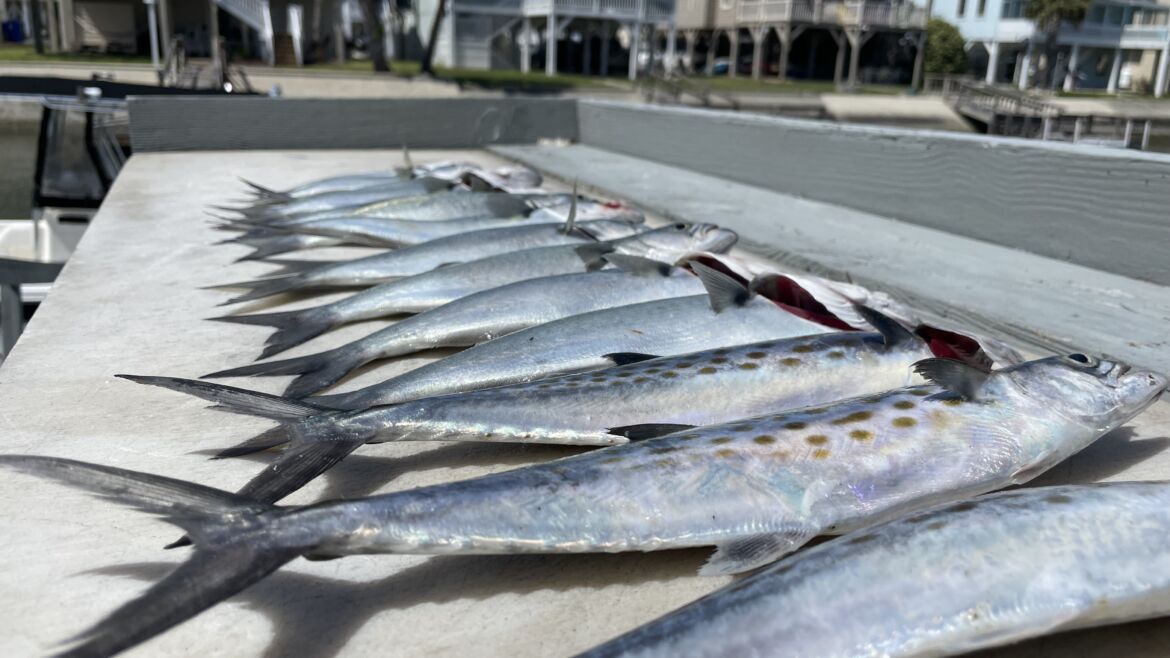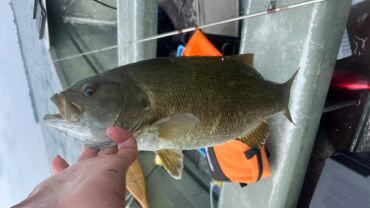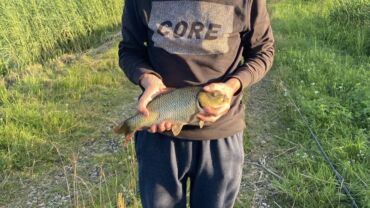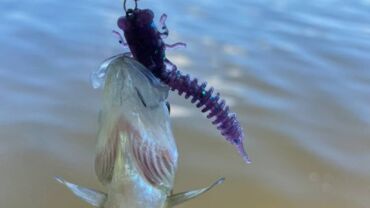To a great deal of anglers, Florida represents the ultimate fishing paradise. Filled with teeming freshwater lakes, beautiful white sand beaches, shallow flats, and the lucrative waters of both the Gulf and Atlantic coast, Florida very easily sets itself apart from many other states. With such a diversity of both freshwater and saltwater species in the state, you can be sure that something is biting during any season of your time in Florida. Before I get into the meat of the article, let’s break down a few of the different fishing opportunities Florida provides anglers with.
First, let’s talk about Freshwater. While I would argue Florida is primarily known for its saltwater fishery, freshwater isn’t far behind. Florida provides ample opportunity to catch Bass—especially Largemouth and Peacock Bass. Not only does Florida provide ample opportunity, but it also provides more—world-class opportunities to catch huge Bass.
Read also: A Comprehensive How-To Guide for Bass Fishing
Moving to saltwater, I don’t even know where to begin. Let’s start with shallow water and work our way out. In the flats of Florida, dedicated fisherman can expect to run into a variety of species including Snook, Trout, Redfish, Tarpon, Bonefish, Flounder, Sheepshead, Black Drum and more. As we move further out, Florida flaunts its environmental wealth even more due to the vast number of reefs and wrecks where bottom fishing is the key focus. Various species of grouper and snapper roam these environments offering anglers an exciting challenge and great table fair. Moving out even further we get to the pelagic species that Florida is also famous for: Mahi Mahi, Tuna of all kinds, Wahoo and more. Last but certainly not least, we have deep-water dwellers such as Snowy Grouper, Swordfish, Tilefish and more.
While this is just a cursory glance at some of what Florida has to offer, you can see just how loaded this state is. As a result, anglers need to change their fish-targeting focus as the seasons change during the year. Being able to change tactics in response to seasons and general weather patterns changing is a huge part of being a great fisherman. You need to be willing to adapt, change strategies, and consider other alternatives at different points in the year.
The Fishbox App can play a huge part in this exact process. Based on data from around 50 different metrics, the Fishbox App gives anglers an unprecedented advantage as they know when and where to focus at different points in the year. Don’t hold yourself back from becoming the best angler you can be and download the fishing app today. All this being said, hop along with me for the ride as I get to show you some of the best things Florida’s fishery has to offer at various points in the year.
Get your personalized fishing map
Answer a quick quiz and get your own personalized fishing map
General Overview of the Florida Fishing Seasons
Now before I get started discussing this subtopic, I want to give you a heads-up because my answer here is going to be very broad. Just like most other states in the US, Florida has four seasons: Spring, Summer, Fall and Winter. However, you’re simplifying the issue too much if you try and say that fishing seasons fit with the four “regular” seasons. Fishing seasons can look drastically different from regular seasons. For example, some species’ fishing season is going to be a fraction of a season (such as just the month of February in the Winter), but in other situations, fishing seasons for other species can span multiple regular seasons like all of Summer and Fall. I hope I’m making sense here. The main point I’m trying to make is that you cannot try and place fishing seasons with normal, weather-based seasons. While that is how some fish operate, that is not always the case. As you will see in the article going forward, a fishing season can be as short as a month. This being said, I’m going to break down each month of the year in hopes of giving you a better grasp of what fish are “in season” and biting within the context of the Florida fishery.
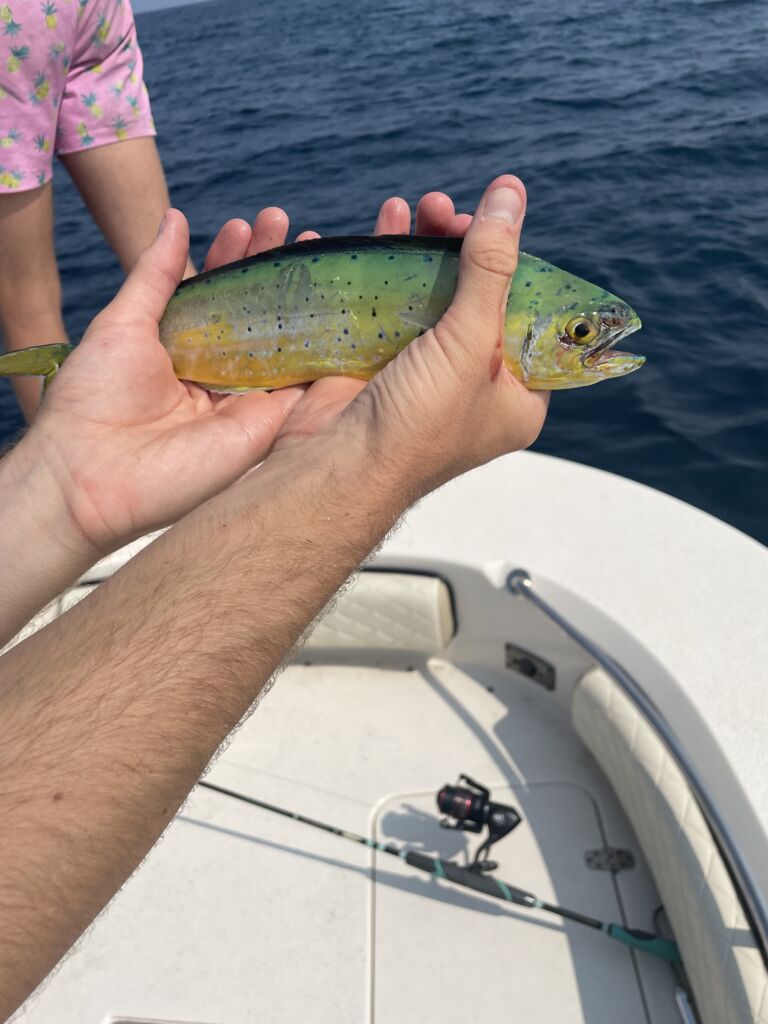
Before I move on to the next topic, I do want to break down the regular seasons about broader patterns within the fishery. Note that this is just an overarching view of fish movement and does not perfectly apply to all fish, rather it just gives a bit of insight into certain fish’s behavior over the year. First, Spring. Generally a time of new life for a ton of different species. Fish often spawn during this time of year and head into shallower waters if they normally dwell in deeper water. Small estuaries and other shallow bodies of water become prime breeding grounds and allow the small fish to grow up and gain strength before moving out into deeper water or off beds like Bass. Second, Summer. Fish action across almost all species heats up as metabolism is high. They need food and thus become more active and willing to bite. Third, fall. The action normally starts to slow in tandem with the metabolism. Now an important note, for a good number of species, Fall is going to be a season of peak action, but we’ll break this down even more later. Lastly, winter. Just in general, it’s not going to be that great for fishing. Fish often retreat to deep water and their metabolism is crawling. The desire and energy to catch prey is not as high leading to less productive fishing sessions. Now like I mentioned before, this is a GENERAL overview of fish species and can vary drastically from one type of fish to the next. Now that we have this out of the way, I think it’s time we start breaking down each month for fishing in Florida.
Fish Species in Each Season
To better break down the fishery and fishing seasons in Florida, let’s take a look at each month to see what your best options are for having a great day on the water.
January:
While January is normally a mediocre month across the rest of the country, Florida is a much different story. January in Florida, especially South Florida, is pretty warm. As you can tell from the chart below, January also provides a pretty good fishery for a few different species. Species that stand out in this month tend to be Crappie, Blackfin Tuna, Sailfish, King Mackerel, Spanish Mackerel, Mangrove Snapper, Sheepshead, and Flounder. While January only provides a great fishery for a relatively small number of species, it still provides enough diversity to have options for what to target. Inshore, Nearshore, and Offshore all have at least a few species giving you versatility in your approach to fishing.
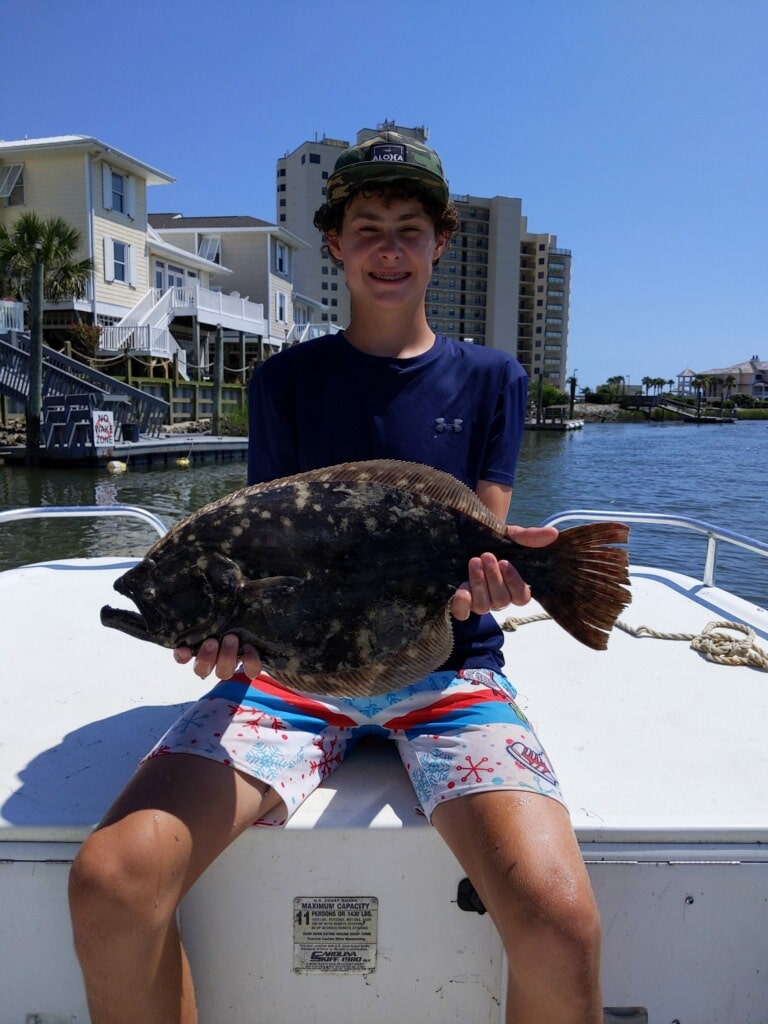
February:
February is going to be very similar to January especially since water temperatures are still on the cooler side. Inshore and Freshwater species start to pick up in terms of action with the water becoming a little warmer. Some of these species include Largemouth and Peacock Bass as well as Snook and Redfish. All in all, for this time of year you’re going to want to stay closer. Nearshore species like Spanish Mackerel will be firing as well as a variety of freshwater and inshore species. Yes, you absolutely could push far out—don’t let me discourage you. But you must realize this month is historically not the greatest for offshore species.
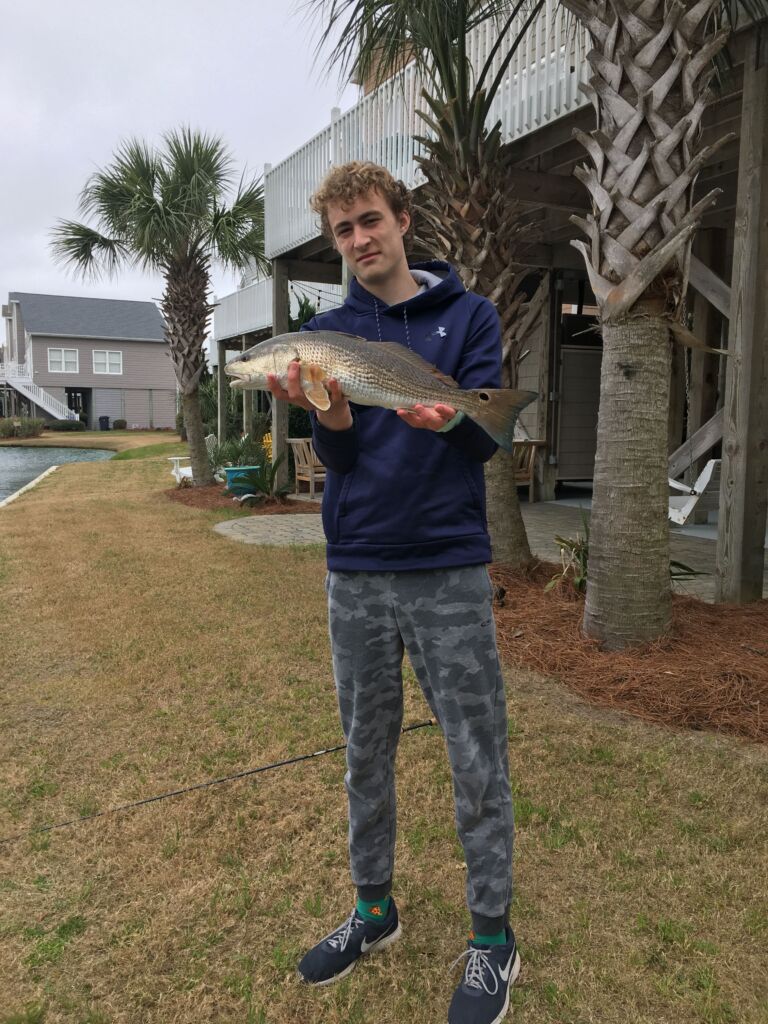
March:
Again, March is largely the same deal as January and February except for the fact that the Bass bite goes into full swing. At this point in the year, as the water begins to warm, Largemouths will begin looking to spawn giving anglers ample opportunity to catch some giants. Additionally, some inshore species are great this time of year like Mangrove Snapper, Trout, Flounder, Redfish, Bonefish and more. So once again, I would recommend saving your fuel money for a better month unless you want to push offshore.
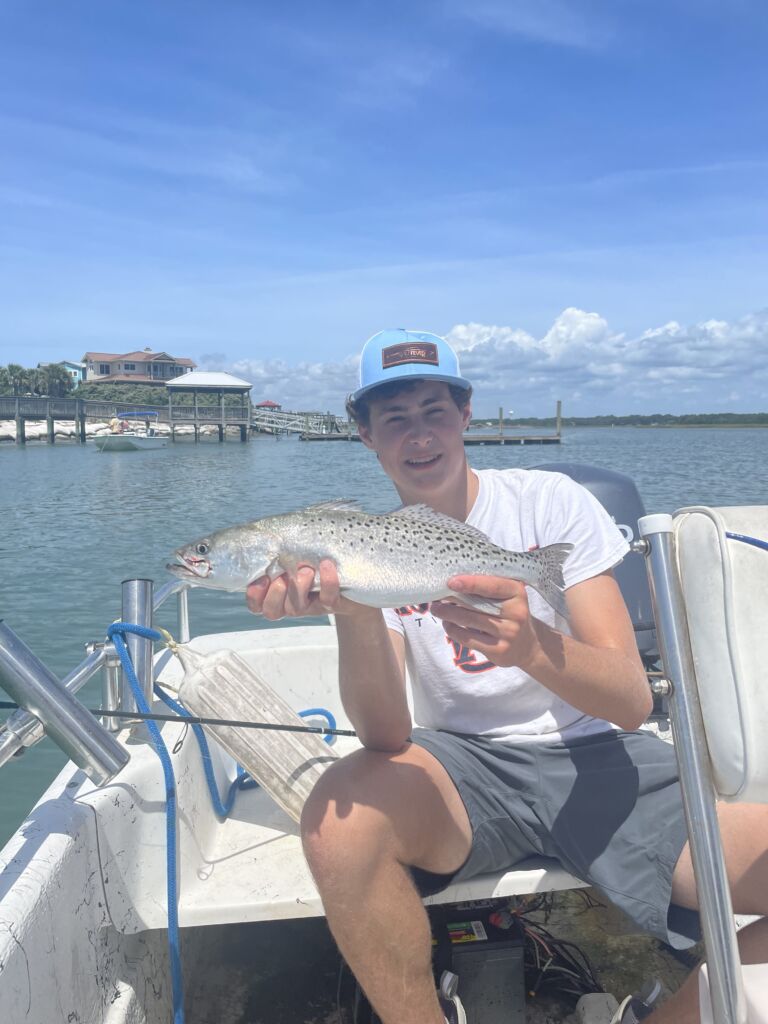
April:
April kicks off the start of the offshore season for Florida fishing. Mahi Mahi floods the waters around the coast offering anglers limitless opportunities to fill their fish boxes with lots of good meat. Additionally, the freshwater scene stays great as it has not gotten too hot yet. Blackfin Tuna also continues to stay around, and the inshore species are also still more than willing to bite. All in all, I would say April is the mark of the starting line for the fishing season in Florida—from here on out it only gets better.
May:
May is when Florida’s fishery goes ballistic. As you can see from the chart down below, almost every species on the chart is green. The Offshore fishery is on fire with species like Mahi Mahi, Blackfin Tuna, Yellowfin Tuna, and Marlin everywhere. Additionally, the inshore fishery reaches its peak season with great fishing for almost all inshore species. Lastly, nearshore action continues to heat with species like Jacks and Grouper becoming more active. When I say you cannot mess up in May, I mean it. You can go anywhere and do anything and have a shot at a massively successful day on the water.
June:
June is also very similar to May with many of the same species continuing to hang around—especially offshore and inshore. At this point in the year though, the Tarpon bite starts to fade but other species like Sailfish and Hogfish pick up. Again, you can’t mess up in June—there’s just too many fish around.
July:
The Summer month pattern continues as July also happens to be a wonderful month to be out on the water. While you may have to battle some heat, the extra effort can be well worth it. The offshore and nearshore fisheries are at their peak with big Mahi Mahi still sticking around. The only real downside to July is the freshwater side of things. At this point, the Bass and Panfish bite begins to die off as high water temperatures push fish deep.
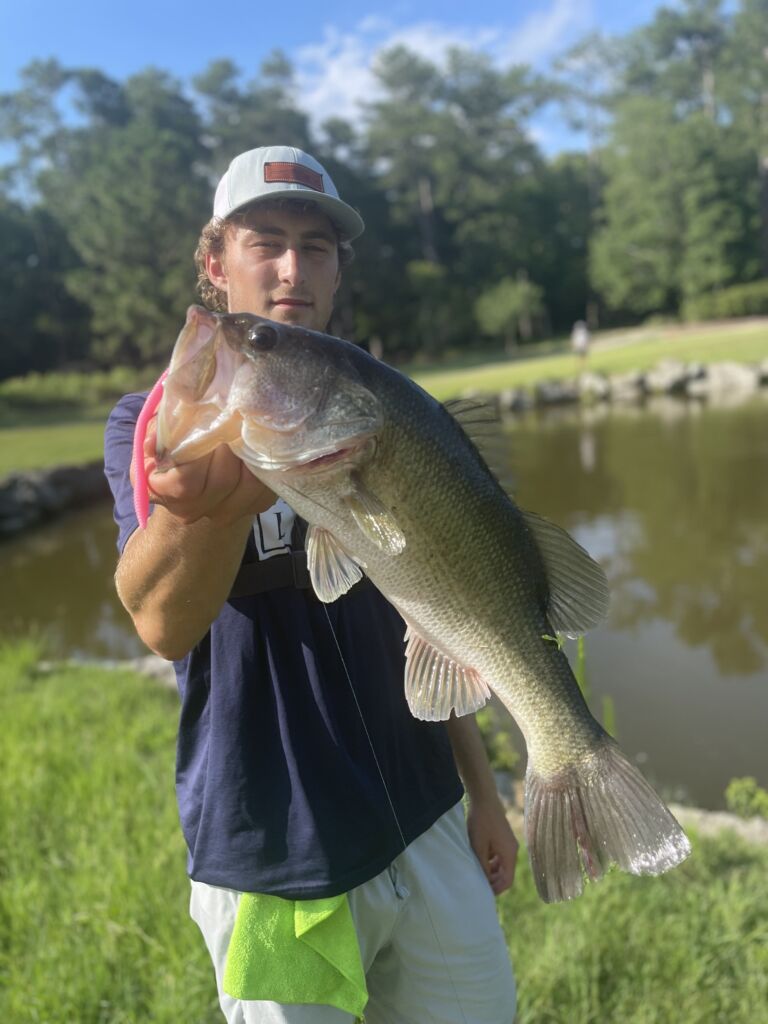
August:
As August rolls around, both the offshore and freshwater fisheries are on a decline. While they may be on a decline, the fishing is still decent—especially for species like Yellowfin Tuna, Blackfin Tuna, Blue Marlin, and Wahoo. August is a phenomenal month for pelagics even though some species like Mahi are on their way out. Nearshore will continue to produce this time of year with very little change from previous months. The only notable change is a decline in Redfish activity.
September:
September kicks off what I like to call the Winter fade. Water temperatures around the state start to fall forcing fish to both retreat to deeper waters and eat less food. There are very few notable increases in species activity aside from the Flounder. However, the offshore fishery takes significant hits with species like Tuna moving out.
October:
Unfortunately, during October fishing becomes even tougher for a lot of species. I would generally recommend staying closer to the shore during these months targeting species like Spanish Mackerel, Mangrove Snapper, and a slew of inshore species like Tarpon, Flounder, and Bonefish. Offshore still has some redeeming qualities, mainly being wahoo, but the freshwater bite is relatively dead.
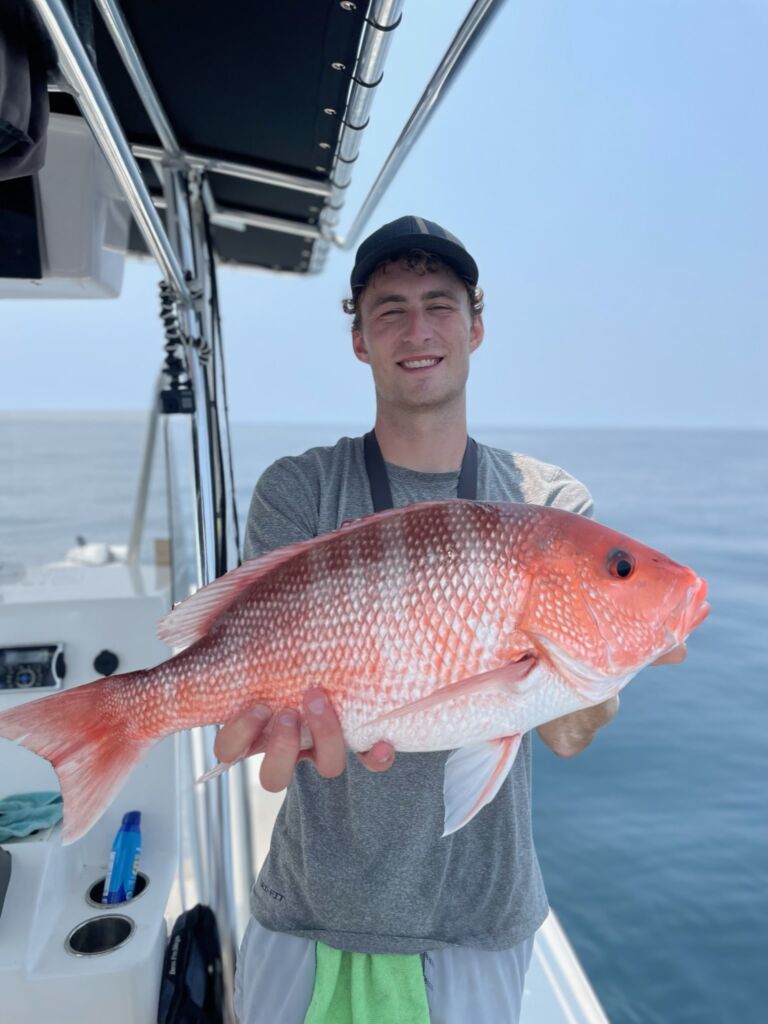
November:
November is also very similar to October as the fishing gets worse for the most part. By this point in the year, especially around northern Florida and the panhandle. Water temperatures plummet leaving a lot of fish extremely lethargic and unwilling to eat. Your best bet will once again be staying close to the beach and backwater, especially hoping to find some Flounder, Snook and maybe Redfish moving into the shallows.
December:
Stay inside. Just kidding. In December the water is going to be very cold unless you’re in South Florida or maybe the Keys. Regardless, fishing is still just not that great—but don’t let this discourage you. There are still species, especially nearshore and inshore, that can provide a bit of action on a cold day. If you decide to venture out, try targeting species like Flounder, Trout, and Sheepshead.
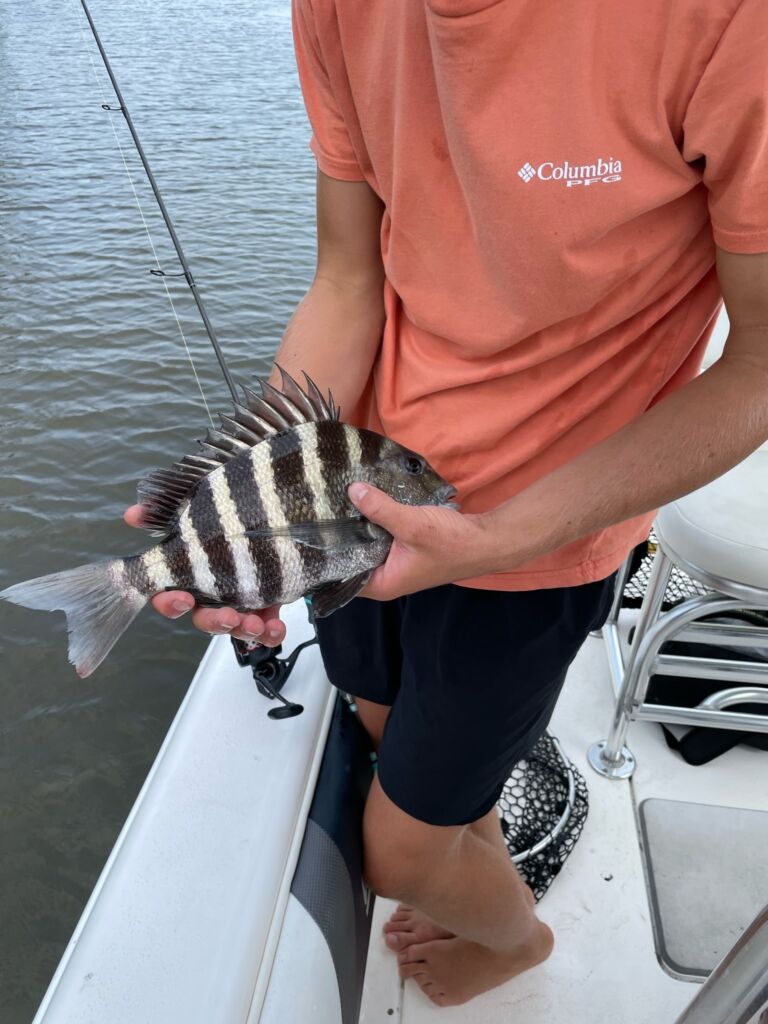
Florida Fishing Calendar
| Fish Species | Jan | Feb | Mar | Apr | May | Jun | Jul | Aug | Sep | Oct | Nov | Dec |
| Largemouth Bass | Poor | Good | Great | Great | Great | Great | Good | Good | Good | Good | Poor | Poor |
| Crappie | Great | Great | Good | Poor | Poor | Poor | Poor | Poor | Poor | Good | Great | Great |
| Peacock Bass | Good | Great | Great | Great | Great | Great | Good | Good | Poor | Poor | Poor | |
| Wahoo | Good | Great | Good | Good | Good | Good | Good | Great | Great | Great | Great | Good |
| Yellowfin Tuna | Poor | Poor | Poor | Good | Great | Great | Great | Great | Great | Good | Poor | Poor |
| Blackfin Tuna | Great | Great | Great | Great | Great | Great | Great | Great | Great | Great | Great | Great |
| Amberjack | Poor | Poor | Good | Good | Good | Great | Great | Great | Great | Good | Good | Poor |
| Red Snapper | Season Closed | Season Closed | Season Closed | Season Closed | Season Closed | Great | Great | Season Closed | Great | Great | Season Closed | Season Closed |
| Sailfish | Great | Great | Good | Poor | Poor | Good | Great | Good | Good | Poor | Great | Great |
| Blue Marlin | Poor | Poor | Poor | Good | Great | Great | Great | Great | Good | Poor | Poor | Poor |
| King Mackerel | Great | Great | Good | Good | Poor | Poor | Poor | Poor | Good | Good | Poor | Poor |
| Hogfish | Poor | Good | Good | Poor | Poor | Good | Good | Good | Poor | Poor | Poor | Poor |
| Goliath Grouper | Poor | Poor | Poor | Good | Great | Great | Great | Great | Great | Good | Poor | Poor |
| Gag Grouper | Season Closed | Season Closed | Season Closed | Great | Great | Good | Season Closed | Season Closed | Poor | Good | Great | Great |
| Mahi Mahi | Good | Good | Good | Great | Great | Great | Great | Great | Good | Poor | Good | Good |
| Permit | Poor | Poor | Poor | Good | Great | Great | Great | Great | Great | Good | Poor | Poor |
| Jack Crevalle | Poor | Poor | Good | Good | Great | Great | Great | Great | Great | Good | Good | Poor |
| Spanish Mackerel | Great | Great | Great | Great | Great | Great | Great | Great | Great | Great | Great | Great |
| Mangrove Snapper | Great | Great | Great | Great | Great | Great | Great | Great | Great | Great | Great | Great |
| Sheepshead | Great | Great | Great | Great | Great | Great | Great | Great | Great | Great | Great | Great |
| Tarpon | Poor | Poor | Poor | Good | Great | Great | Great | Great | Good | Good | Poor | Poor |
| Flounder | Great | Great | Great | Great | Good | Poor | Poor | Poor | Good | Great | Great | Great |
| Spotted Seatrout | Good | Good | Great | Great | Great | Great | Great | Great | Great | Great | Good | Good |
| Snook | Poor | Good | Good | Good | Great | Great | Great | Great | Great | Good | Great | Good |
| Redfish | Poor | Good | Great | Great | Great | Great | Great | Good | Good | Good | Poor | Poor |
| Bonefish | Good | Good | Great | Great | Great | Great | Great | Great | Great | Great | Great | Good |
Choosing the right season for a target fish is vastly important to the success of the day. Yes, this chart and the information presented show that certain months are better than others, but this doesn’t at all mean you should restrict your fishing to certain months. There are tons and tons of instances where fish are caught outside prime bite seasons so don’t let this chart hold you up. Rather, you should use this chart as a general guide just to see what is going on at a certain time of year in Florida. This chart should give you a better game plan and approach to how you plan out your days. Another important note, if fishing is not going to be that great for a particular species in Florida during a certain time, it’s not a great idea to try and “force target” the species—especially if you’re just trying to go out and have fun. Use the chart and find a high-percentage fish to increase your chances of a more productive day on the water.
Read also: California Fishing Seasons: Your Complete Guide
Top Fishing Spots for Each Season
- Winter: Try and stay close to the beach if you can. It shouldn’t be too difficult to find large schools of Spanish Mackerel to cast into. If you don’t want to target Spanish Mackerel, you can also target the inshore backwater areas such as mangroves overhanging the water and flats for a variety of inshore species. This will be your best bet for this time of year.
- Spring: This is a time of year when you need to move offshore to fill up that color. Few places in the world can compete with the Spring offshore fishing that Florida offers. Oftentimes, pelagics like Tuna, Mahi, and Billfish will congregate in the warm, deep waters of the Gulf Stream. Further inland, in the backwaters on flats and in mangroves the inshore bite continues to fire. Additionally, small, local ponds should be teeming with Bass and Panfish action as well. In summary, everywhere is a top fishing spot in the Spring in Florida.
- Summer: Again, Summer is going to be a great time to get offshore if you have the means to do so. Closer to shore wrecks and reefs provide great cover for Snapper and Grouper and further offshore the Gulf Stream will still be holding a variety of pelagics for you to target. While the freshwater fishery is starting to decline, ponds can still be decent places to wet a line and get outside if you want to.
- Fall: Fall is when you’re going to want to shift your entire operation to inshore and backwater. Flats and mangroves should still be holding large numbers of inshore species like Trout, Flounder, and even Redfish. Offshore and freshwater have almost died by this time, so unless you’re dying to get out there, I would recommend staying in the shallow backwaters.
Get your personalized fishing map
Answer a quick quiz and get your own personalized fishing map
Tips and Techniques
- Seasonal Fishing Tactics: Your fishing tactics will and should change as the year progresses and you target different species. For example, in the Winter, I’m using live bait on Carolina Rig if live bait is available. The fish are going to be hugging the bottom and that is where your bait also needs to be. In the Spring when Bass fishing heats up, I’m using creature baits and swimbaits to hopefully threaten a spawning Bass into biting the lure. Inshore, I’m using the same strategies I described a second ago. For nearshore, especially if there is schooling fish, I’m using fast-action casting jigs and maybe trolling Clarkspoons. Offshore, I’m heavily utilizing them whether that be with live baits or artificials. In addition, Spring also gives you a unique opportunity to pitch live baits and artificials on floating objects offshore. In the summer, I’m doing almost the same things as the Spring except I’m backing off freshwater fishing, especially near the end of summer. Offshore, nearshore, and inshore will all be at the least decent. In the Fall, I use the same tactics listed above if those same species are still active. There is one thing I would also try in the Spring I haven’t mentioned yet—bottom fishing. This can be especially productive for Snapper and Grouper on reefs and wrecks. You can use live or cut bait, but most fish will prefer live bait.
Read also: Unlocking the Secrets of Perfect Fishing Weather
- Regulations and Best Practices: Florida’s fishing regulations are in place for the safety of the fishery and yourself. So next time you’re out on the water, pay careful attention to quotas and size limits to make sure we are keeping our fishery as healthy and sustainable as it can be. Sure, I know we’ve all had those moments where we’ve thought about keeping one fish past the quota or keeping that fish when it’s out of season, I get it, I really do. But trust me, it’s not worth the consequence of the law. Even if you don’t ever get caught, you need to realize you’re hurting the fishery for everyone else. So don’t be selfish and play by the rules. Have fun but respect the environment that God has given us.
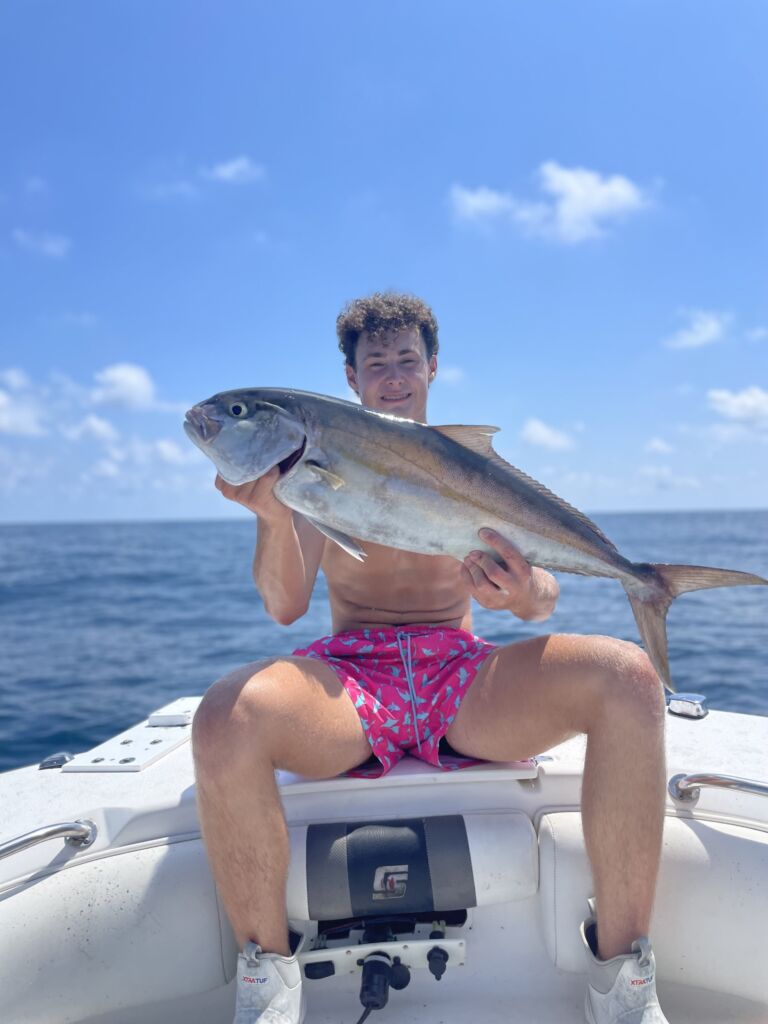
Conclusion
Florida’s fishery is undoubtedly one of the best on the entire planet. However, even though it may be the best fishery on the planet, we anglers still need to pay close attention to the seasons and species we are targeting so we aren’t wasting time and effort. Choosing to pay attention to seasonal fish patterns can spell the difference between a bad or good day on the water. So let this article be a guide to you in choosing how you approach the Florida fishery. While some seasons certainly aren’t as great as others, Florida always has something to offer so take advantage of that. I hope this article was helpful to y’all and as always, tight lines!
Photo Source: All photos in this article were provided by expert Pierce Latta.
Visit his Instagram profile.
Subscribe to his YouTube channel.
